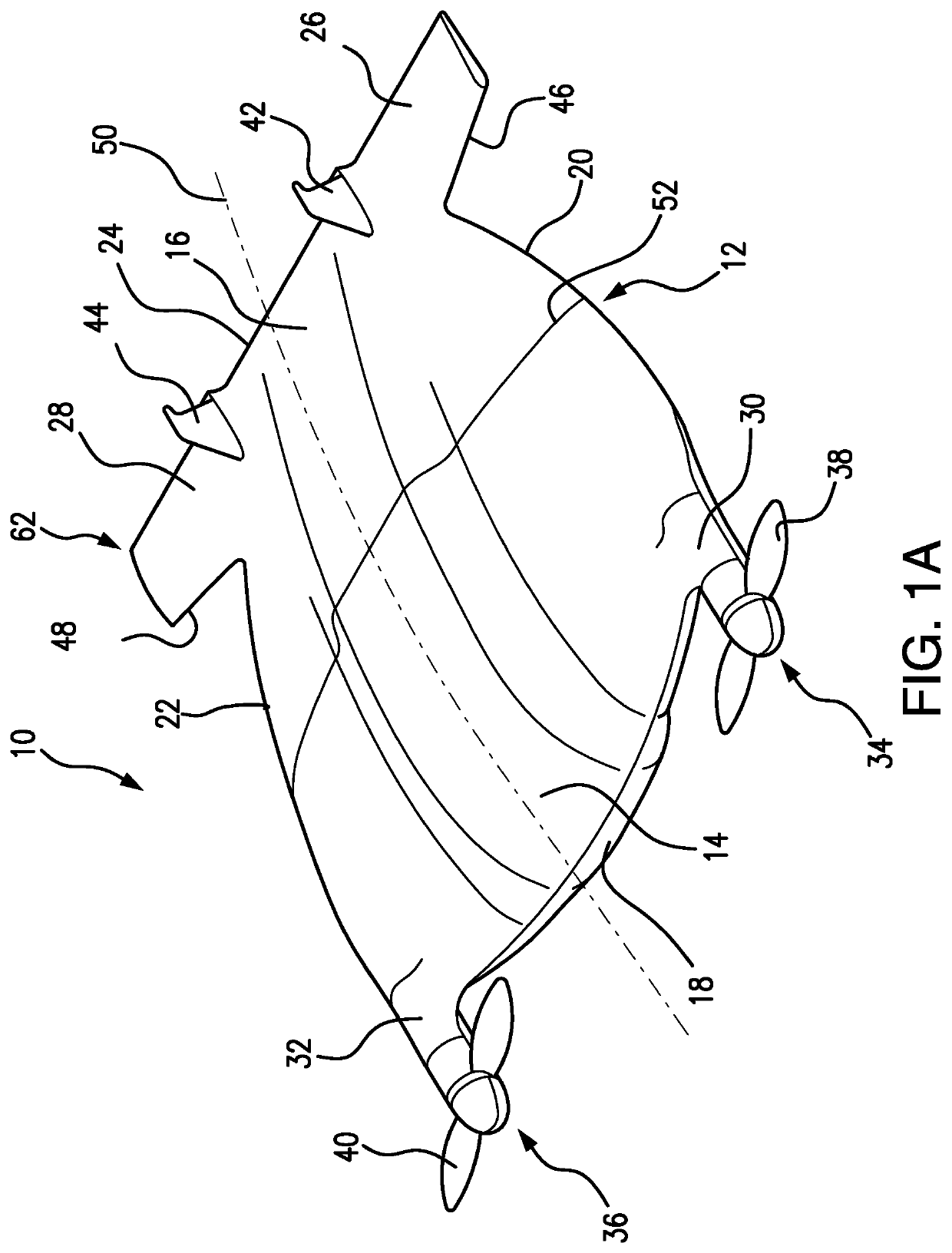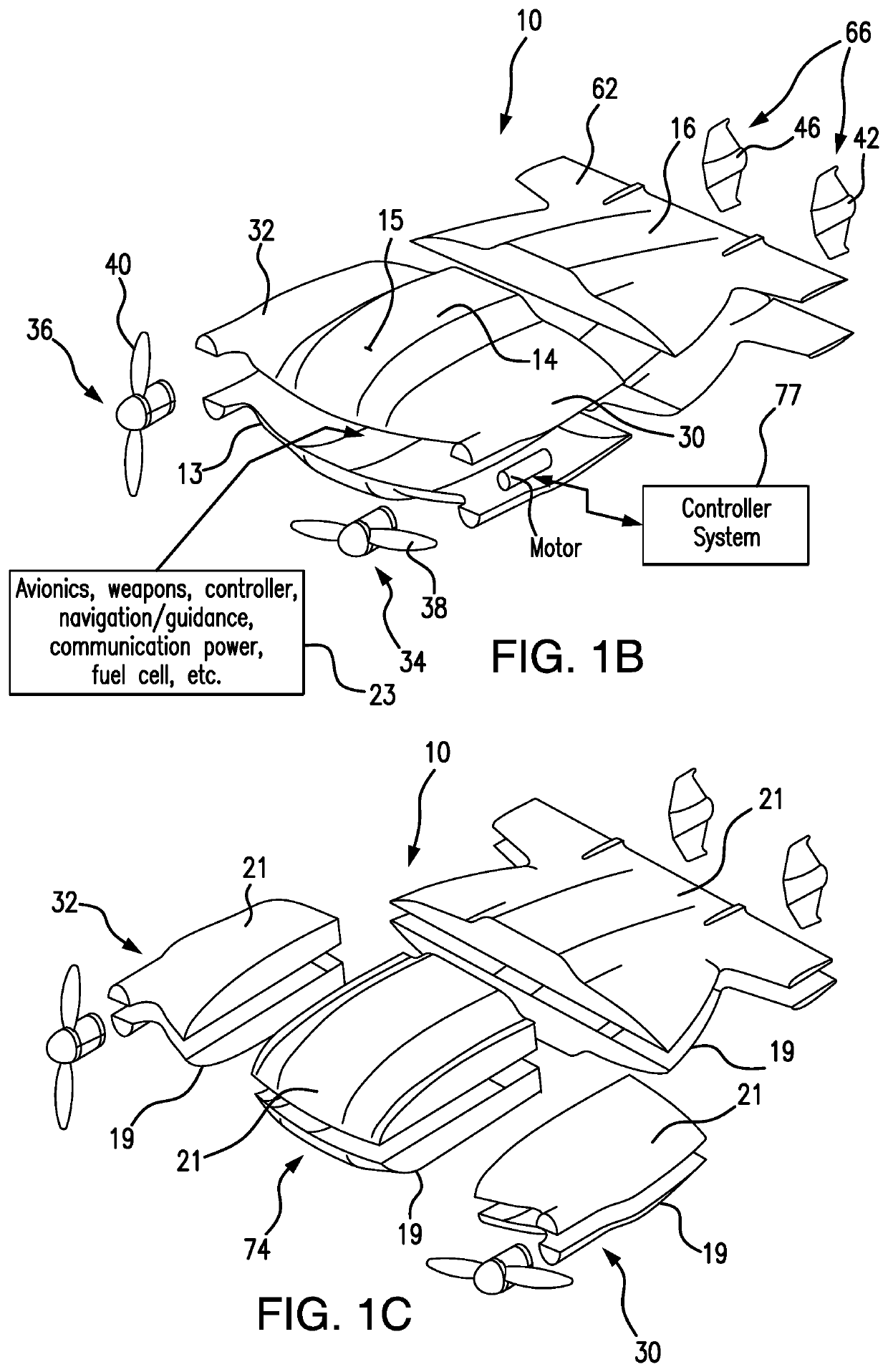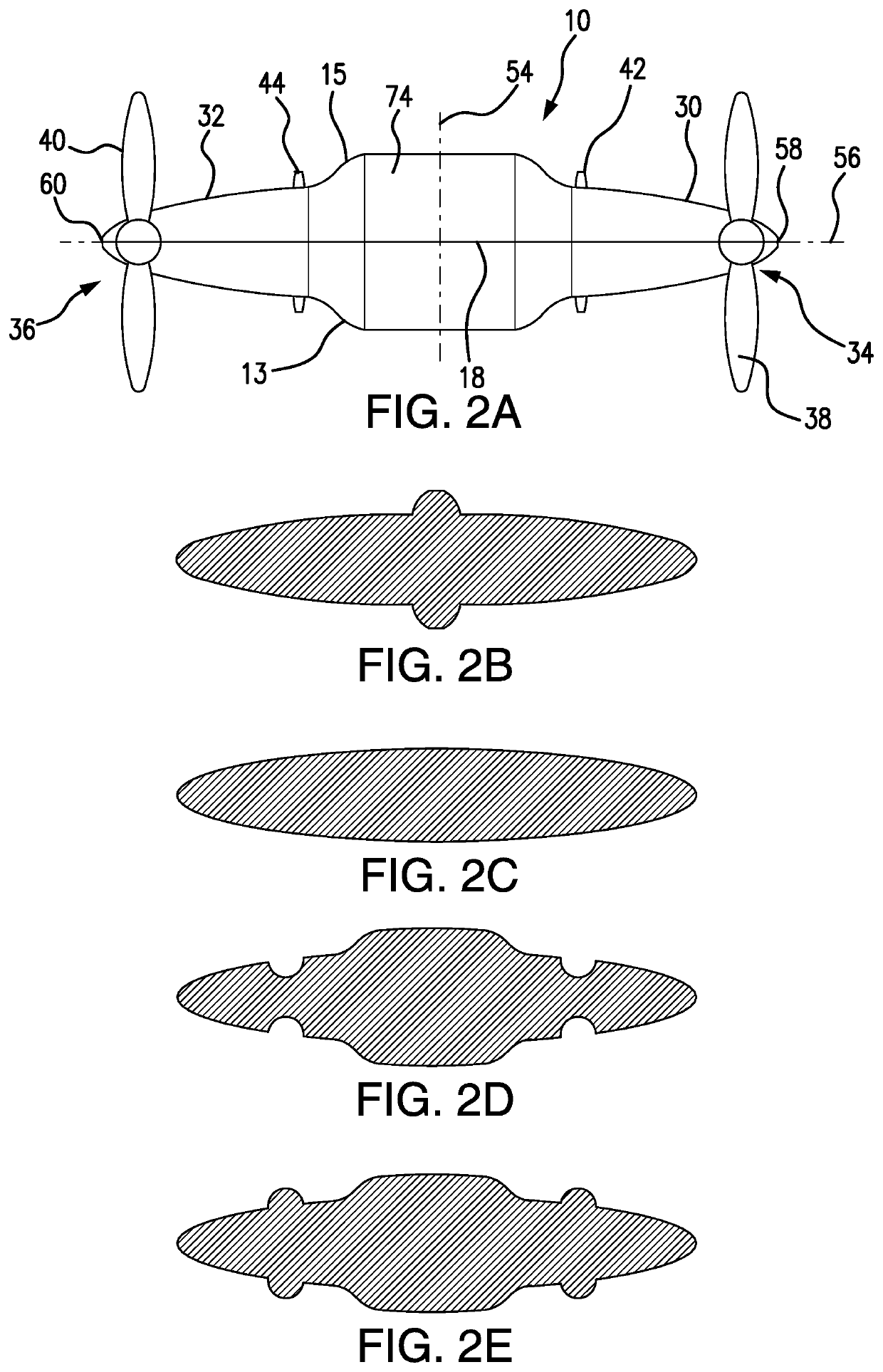Universal vehicle with improved stability for safe operation in air, water and terrain environments
a technology of safe operation and stability, applied in the field of vehicle transportation industry, can solve the problems of limited control capabilities of these systems, affecting the safety of the aircraft, and the helicopter system is generally only halfway efficient in the airplane system, so as to improve the stability of the vehicle and ensure the safe operation. safe transition, the effect of improving the stability
- Summary
- Abstract
- Description
- Claims
- Application Information
AI Technical Summary
Benefits of technology
Problems solved by technology
Method used
Image
Examples
Embodiment Construction
[0103]In the present aircraft design, the effectiveness and versatility of the vehicle results from the combined integration of the vehicle's sub-systems and their cross functionality. The concept underlying the design and operation of the subject system is not limited to the use of sub-systems with exclusively dedicated functions, but rather capable of multiple function systems. For example, some of the proposed embodiments combine the thrust vectoring nacelles with the landing gear and / or payload compartment. The vehicle body functions as both a primary lift generation and avionics / payload compartmentalization, the trailing edge of the lifting body, and horizontal and vertical stabilizers, and / or rear vehicle body and also function as a landing apparatus.
[0104]The aircraft of the present invention, when used as an Unmanned Aerial System, may be used to meet various end-user needs such as, but not limited to, security monitoring, crisis mitigation, disaster relief, scientific sensi...
PUM
 Login to View More
Login to View More Abstract
Description
Claims
Application Information
 Login to View More
Login to View More - R&D
- Intellectual Property
- Life Sciences
- Materials
- Tech Scout
- Unparalleled Data Quality
- Higher Quality Content
- 60% Fewer Hallucinations
Browse by: Latest US Patents, China's latest patents, Technical Efficacy Thesaurus, Application Domain, Technology Topic, Popular Technical Reports.
© 2025 PatSnap. All rights reserved.Legal|Privacy policy|Modern Slavery Act Transparency Statement|Sitemap|About US| Contact US: help@patsnap.com



